Muscle & strength workouts are essential for building a strong and toned physique. Whether you’re a beginner or an experienced lifter, this comprehensive guide will provide you with everything you need to know to achieve your fitness goals. From understanding muscle anatomy and physiology to developing effective training programs, we’ll cover it all.
Muscle Anatomy and Physiology
Understanding muscle anatomy and physiology is essential for optimizing muscle growth and strength. Skeletal muscles, the primary movers of our bodies, exhibit remarkable complexity and adaptability in response to various stimuli.
Structure and Function of Skeletal Muscle
Skeletal muscles are composed of bundles of muscle fibers, each surrounded by a connective tissue sheath called the endomysium. These bundles are grouped into larger units called fascicles, which are enveloped by the perimysium. The entire muscle is enclosed by the epimysium.
Muscle fibers are specialized cells responsible for muscle contraction. They contain myofibrils, composed of actin and myosin filaments, which slide past each other during contraction.
Role of Tendons and Ligaments
Tendons are tough, fibrous cords that connect muscles to bones, transmitting the force of muscle contractions. Ligaments, also composed of connective tissue, connect bones to bones, providing stability to joints.
Mechanisms of Muscle Contraction and Relaxation
Muscle contraction occurs when calcium ions bind to receptors on the sarcoplasmic reticulum, releasing calcium into the cytosol. This triggers a cascade of events leading to the sliding of actin and myosin filaments, resulting in muscle shortening.
Relaxation occurs when calcium is pumped back into the sarcoplasmic reticulum, allowing the filaments to detach and the muscle to lengthen.
Types of Muscle Fibers
There are three main types of muscle fibers:
- Slow-twitch (Type I):High endurance, low power output, fatigue-resistant
- Fast-twitch (Type IIa):Intermediate endurance, power output, and fatigability
- Fast-twitch (Type IIx):Low endurance, high power output, fatigue-prone
Neuromuscular Junction
The neuromuscular junction is the site where nerve impulses are transmitted to muscle fibers. Acetylcholine, released from the nerve terminal, binds to receptors on the muscle fiber, initiating muscle contraction.
Muscle Fatigue and Recovery
Muscle fatigue is a temporary inability of the muscle to generate force. It can be caused by depletion of energy stores, accumulation of metabolic byproducts, or damage to muscle fibers.
Recovery from fatigue involves replenishing energy stores, removing waste products, and repairing damaged muscle tissue.
Effects of Exercise on Muscle Structure and Function
Regular exercise can induce significant adaptations in muscle structure and function:
- Increased muscle size:Resistance training stimulates muscle growth, resulting in hypertrophy.
- Improved muscle strength:Resistance training increases the number and strength of myofibrils, enhancing muscle’s force-generating capacity.
- Enhanced endurance:Aerobic exercise increases the density of mitochondria and blood vessels in muscles, improving their oxygen utilization and endurance capacity.
Exercise Selection and Progression

Building muscle and strength requires a well-structured exercise program that incorporates a variety of exercises targeting different muscle groups. The selection of exercises and the progression of their intensity and volume play a crucial role in achieving desired results.
Exercises can be categorized based on the muscle groups they primarily target and the movement patterns they involve. Some common muscle groups include the chest, back, shoulders, arms, legs, and core. Movement patterns can be classified as compound exercises, which work multiple muscle groups simultaneously, and isolation exercises, which focus on a single muscle group.
Compound Exercises
- Squats
- Deadlifts
- Bench press
- Overhead press
- Barbell rows
Compound exercises are highly effective for building muscle mass and strength because they engage a large number of muscle fibers and stimulate hormonal responses that promote muscle growth.
Isolation Exercises
- Bicep curls
- Tricep extensions
- Leg extensions
- Hamstring curls
- Calf raises
Isolation exercises are beneficial for targeting specific muscle groups and improving muscle definition. They can be incorporated into a program to address muscle imbalances or to focus on specific areas for development.
Exercise Progression
As you progress in your training, it’s important to gradually increase the intensity and volume of your workouts to continue challenging your muscles and stimulating growth. This can be achieved by:
- Increasing weight or resistance
- Adding sets or repetitions
- Reducing rest periods
It’s crucial to listen to your body and progress at a rate that allows for proper recovery and minimizes the risk of injury. A gradual and consistent approach to exercise progression will yield optimal results in building muscle and strength.
Training Programs
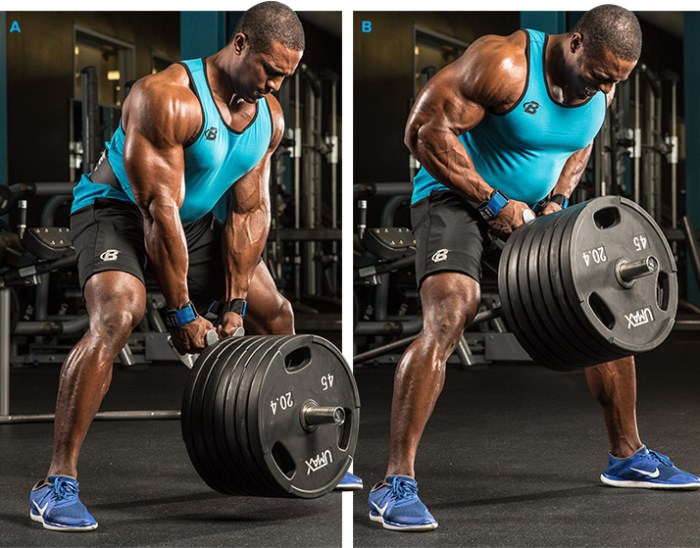
Strength training programs can vary based on individual goals, experience levels, and abilities. Here are sample programs designed for beginners and experienced lifters, along with variations and modifications to accommodate different needs.
Sample Strength Training Program for Beginners
A beginner’s program should focus on building a foundation of strength and improving technique. Start with 2-3 workouts per week, focusing on compound exercises that work multiple muscle groups. Gradually increase weight or resistance as you get stronger.
- Workout A:Barbell squat, dumbbell bench press, dumbbell row
- Workout B:Leg press, dumbbell lunges, bicep curls
- Workout C:Overhead press, triceps extensions, calf raises
Sample Strength Training Program for Experienced Lifters
Experienced lifters can benefit from more advanced programs that include periodization, variations in exercise selection, and higher intensity. Aim for 3-5 workouts per week, with a focus on progressive overload and recovery.
- Week 1:Hypertrophy (high volume, moderate weight)
- Week 2:Strength (low volume, heavy weight)
- Week 3:Deload (light weight, active recovery)
- Week 4:Repeat
Variations and Modifications
To accommodate different goals and abilities, consider the following variations and modifications:
- Increase weight or resistance:For strength gains
- Increase volume:For hypertrophy (muscle growth)
- Decrease rest time:For endurance
- Modify exercises:To accommodate injuries or limitations
Tips for Beginners on How to Get Started with Strength Training
- Start with a light weight and gradually increase it as you get stronger.
- Focus on proper form to avoid injuries.
- Listen to your body and rest when needed.
- Be consistent with your workouts.
- Find a workout buddy or trainer for support and motivation.
Recovery and Regeneration
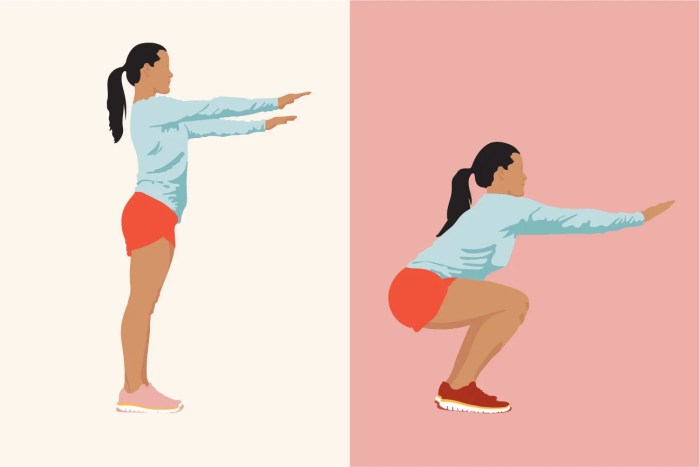
Recovery is a crucial aspect of muscle growth and overall fitness. It allows the body to repair and rebuild muscle tissue, replenish energy stores, and reduce muscle soreness. Here’s an overview of the importance of rest and recovery and strategies for optimizing it.
Importance of Rest and Recovery for Muscle Growth
- Muscle Repair and Growth:Rest provides time for damaged muscle fibers to repair and rebuild, leading to muscle growth.
- Energy Replenishment:Recovery allows the body to replenish glycogen stores, which are essential for energy during workouts.
- Reduced Muscle Soreness:Rest helps reduce muscle soreness by allowing inflammation to subside and promoting blood flow to the muscles.
Role of Sleep, Hydration, and Nutrition in Recovery
Sleep, hydration, and nutrition play vital roles in recovery:
- Sleep:Adequate sleep (7-9 hours per night) promotes muscle repair, growth hormone release, and cognitive recovery.
- Hydration:Staying hydrated ensures proper blood flow, nutrient delivery, and waste removal, all essential for recovery.
- Nutrition:Consuming a balanced diet with adequate protein, carbohydrates, and healthy fats supports muscle repair and replenishment.
Strategies for Optimizing Recovery and Minimizing Muscle Soreness
- Active Recovery:Engage in light activities like walking, swimming, or cycling to promote blood flow and reduce stiffness.
- Massage:Sports massage can help improve circulation, reduce muscle tension, and promote relaxation.
- Stretching:Stretching improves flexibility, reduces muscle tightness, and aids in recovery.
- Ice Baths:Immersing in cold water can reduce inflammation and muscle soreness.
Key Elements of an Effective Recovery Plan
| Element | Duration | Frequency | Intensity |
|---|---|---|---|
| Rest | 24-48 hours between workouts | As needed | Complete rest or light activity |
| Sleep | 7-9 hours per night | Daily | High-quality sleep |
| Hydration | 8-10 glasses of water per day | Throughout the day | Adequate fluid intake |
| Nutrition | Protein intake of 1.2-1.7 grams per kilogram of body weight per day | With every meal | Balanced diet with sufficient protein, carbohydrates, and healthy fats |
Sample Recovery Plan for a Marathon Training Individual
Here’s a sample recovery plan for an individual training for a marathon:
- Monday:Rest
- Tuesday:Light cardio (30 minutes)
- Wednesday:Massage
- Thursday:Stretching
- Friday:Rest
- Saturday:Long run
- Sunday:Active recovery (walking or cycling)
Tips for Improving Sleep Quality and Reducing Muscle Soreness
- Establish a Regular Sleep Schedule:Go to bed and wake up around the same time each day.
- Create a Relaxing Bedtime Routine:Take a warm bath, read a book, or listen to calming music before bed.
- Avoid Caffeine and Alcohol Before Bed:These substances can interfere with sleep.
- Use Cold Compresses:Apply cold compresses to sore muscles to reduce inflammation.
- Consider Over-the-Counter Pain Relievers:Ibuprofen or acetaminophen can help reduce muscle soreness.
Training for Specific Sports
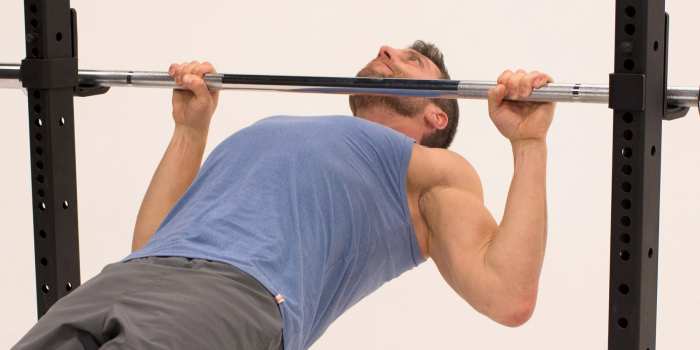
Tailoring strength training programs to specific sports is essential for maximizing performance and minimizing injury risk. Sport-specific training involves exercises that mimic the movements and demands of the particular sport, enhancing strength, power, and endurance in the muscles used during competition.
Exercises for Different Sports
- Football:Squats, deadlifts, bench press, rows, plyometrics
- Basketball:Vertical jumps, lateral bounds, sprints, agility drills
- Running:Hill sprints, interval training, tempo runs, core exercises
Benefits of Sport-Specific Strength Training
- Improved performance by enhancing strength, power, and endurance
- Reduced risk of injury by strengthening muscles and connective tissues
- Enhanced recovery by promoting muscle repair and regeneration
- Increased confidence and motivation through improved physical abilities
10. Injuries and Prevention
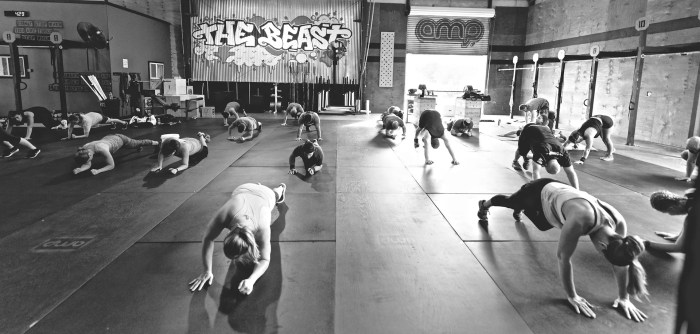
Strength training, while beneficial, can pose risks of injuries if not approached cautiously. Identifying common injuries, understanding their causes and symptoms, and implementing preventive measures are crucial for a safe and effective workout experience.
Common Strength Training Injuries
| Injury | Causes | Symptoms | Prevention |
|---|---|---|---|
| Muscle Strains | Overexertion, improper form | Pain, stiffness, bruising | Warm-up, use proper technique, gradual progression |
| Ligament Sprains | Excessive force or awkward movements | Swelling, pain, instability | Strengthen surrounding muscles, avoid overstretching |
| Tendonitis | Repetitive stress or overuse | Pain, swelling, tenderness | Rest, ice, stretching, gradual load increase |
| Rotator Cuff Tears | Overuse, poor shoulder mechanics | Pain, weakness, difficulty lifting | Strengthen rotator cuff muscles, avoid excessive overhead pressing |
| Carpal Tunnel Syndrome | Repetitive hand and wrist movements | Numbness, tingling, pain | Take breaks, use ergonomic tools, stretch wrists |
Mental Aspects of Strength Training
Developing physical strength is not just about lifting weights; it also requires a strong mind. Mental focus, motivation, and a positive mindset are crucial for achieving success in strength training. This article explores the importance of mental aspects in strength training and provides strategies for developing a mindset for success.
Goal Setting
Clear and specific goals provide direction and motivation for your training. They should be challenging but achievable, and aligned with your overall fitness objectives. Break down your goals into smaller, manageable steps to make them seem less daunting and easier to track progress.
Visualization
Visualization involves mentally rehearsing the movements and outcomes of your workouts. It helps improve muscle activation, reduce anxiety, and build confidence. Before each training session, take a few minutes to visualize yourself performing the exercises correctly and achieving your desired results.
Self-Talk
The words you use to talk to yourself can significantly impact your performance. Use positive and encouraging self-talk to boost motivation and overcome negative thoughts. Avoid self-criticism and instead focus on recognizing your efforts and progress.
Developing a Positive Mindset
A positive mindset is essential for long-term success in strength training. Embrace challenges as opportunities for growth, and view setbacks as learning experiences. Surround yourself with supportive people who believe in you and encourage your progress.
Importance of Rest and Recovery
Rest and recovery are integral parts of strength training. Allow your body sufficient time to rest and rebuild after workouts. Get enough sleep, manage stress, and engage in activities that promote relaxation and well-being.
Technology in Strength Training
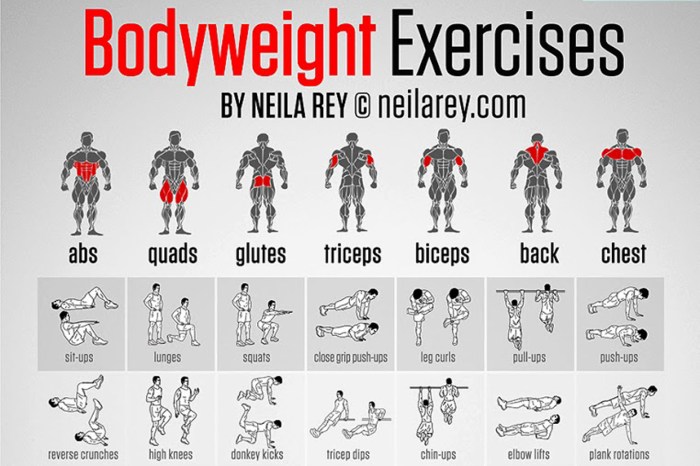
Technology is increasingly becoming an integral part of strength training. From wearable fitness trackers to advanced training equipment, there are a variety of devices available to help you enhance your workouts. In this section, we will explore the use of technology in strength training, discuss the benefits and limitations of these devices, and provide guidance on selecting and using technology to improve your training.
Wearable Fitness Trackers
Wearable fitness trackers are devices that you can wear on your body to track various metrics related to your physical activity, such as steps taken, calories burned, and heart rate. These devices can be useful for strength training in several ways:
- Tracking progress:Fitness trackers can help you track your progress over time by providing data on your workouts, including the number of sets, reps, and weight used.
- Monitoring intensity:Fitness trackers can also monitor your heart rate and other metrics to help you ensure that you are training at an appropriate intensity.
- Providing feedback:Some fitness trackers provide feedback on your workouts, such as suggestions for improving your form or increasing your intensity.
Other Technology in Strength Training
In addition to wearable fitness trackers, there are a variety of other technology-based tools that can be used to enhance strength training, including:
- Smart barbells:Smart barbells are barbells that are equipped with sensors to track the weight lifted, the number of reps performed, and other metrics.
- Training apps:There are a number of training apps available that can provide you with workout plans, track your progress, and provide feedback on your workouts.
- Virtual reality (VR) training:VR training can be used to create immersive training experiences that can help you improve your form and technique.
Benefits and Limitations of Technology in Strength Training
While technology can be a valuable tool for strength training, it is important to be aware of the benefits and limitations of these devices.
Benefits:
- Objectivity:Technology can provide objective data on your workouts, which can help you track your progress and make informed decisions about your training.
- Motivation:Technology can help you stay motivated by providing feedback on your workouts and tracking your progress.
- Convenience:Technology can make strength training more convenient by providing you with workouts that you can do at home or on the go.
Limitations:
- Accuracy:Some fitness trackers are not always accurate, which can lead to inaccurate data on your workouts.
- Cost:Technology can be expensive, which can make it difficult for some people to access.
- Distraction:Technology can be distracting, which can interfere with your workouts.
Selecting and Using Technology for Strength Training
If you are considering using technology to enhance your strength training, it is important to select the right devices and use them in a way that is beneficial to your training. Here are a few tips for selecting and using technology for strength training:
- Consider your needs:Before purchasing any technology, consider your individual needs and goals. What are you hoping to achieve with technology? What features are important to you?
- Do your research:There are a variety of technology-based tools available for strength training. Do your research to find the devices that are best suited for your needs.
- Start slowly:Don’t try to use all of the features of your new technology at once. Start slowly and gradually incorporate technology into your training.
- Use technology as a tool:Technology should be used as a tool to enhance your strength training, not as a replacement for it. Focus on using technology to improve your form, track your progress, and stay motivated.
Case Studies and Success Stories: Muscle & Strength Workouts
Gaining muscle and strength is a journey that requires dedication, hard work, and a well-structured plan. To inspire and motivate you, here are case studies and success stories of individuals who have achieved significant progress in their fitness endeavors.
These stories showcase the power of consistency, proper training techniques, and the transformative effects of muscle and strength development. We’ll delve into the specific training methods, nutrition strategies, and other factors that contributed to their remarkable results.
John’s Transformation, Muscle & strength workouts
John, a 35-year-old office worker, was determined to improve his physique and overall fitness. Despite having limited gym experience, he embarked on a structured training program that focused on compound exercises, progressive overload, and adequate rest.
John’s training regimen included exercises such as squats, deadlifts, bench press, and overhead press. He started with a manageable weight and gradually increased it over time. He maintained proper form throughout his workouts and ensured he got enough sleep and recovery to support muscle growth.
In addition to his training, John followed a calorie-controlled diet that provided him with sufficient protein, carbohydrates, and healthy fats. He prioritized whole, unprocessed foods and limited his intake of sugary drinks and processed snacks.
Within a year of consistent effort, John gained 15 pounds of muscle, reduced his body fat percentage, and significantly improved his strength levels. He overcame challenges such as plateaus and minor injuries by staying persistent and seeking guidance from a qualified personal trainer.
John’s success story demonstrates that with determination and a well-rounded approach, anyone can achieve their muscle-building and strength goals.
Last Word
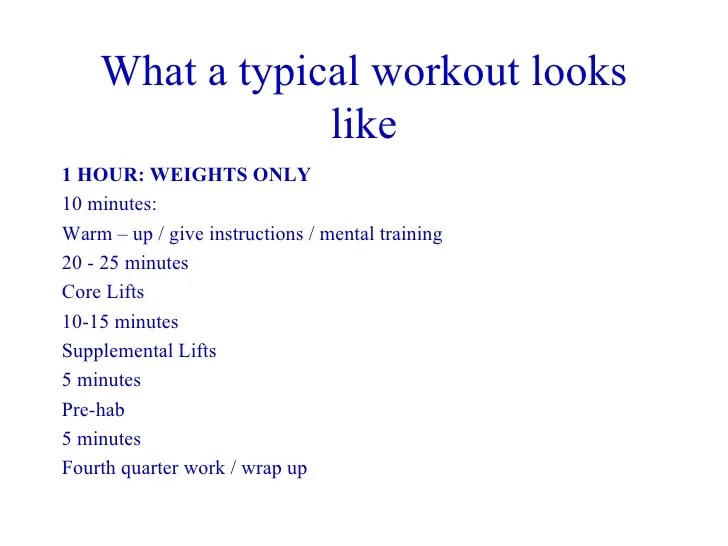
Incorporating muscle & strength workouts into your fitness routine can transform your body and improve your overall health. By following the principles Artikeld in this guide, you can build muscle, increase strength, and unlock your full fitness potential.
FAQ Guide
What are the benefits of muscle & strength workouts?
Muscle & strength workouts offer numerous benefits, including increased muscle mass, improved strength, enhanced athletic performance, reduced risk of injury, and improved overall health.
How often should I do muscle & strength workouts?
For optimal results, aim for 2-3 muscle & strength workouts per week, with at least 48 hours of rest between workouts.
What is progressive overload?
Progressive overload is the gradual increase in weight, sets, reps, or intensity over time to continuously challenge your muscles and promote growth.
How can I prevent injuries during muscle & strength workouts?
To prevent injuries, always warm up before workouts, use proper form, and listen to your body. Avoid lifting too heavy too soon, and don’t neglect rest and recovery.
What is the best diet for muscle & strength workouts?
A healthy diet for muscle & strength workouts should include plenty of protein, carbohydrates, and healthy fats. Focus on whole, unprocessed foods and stay hydrated.
Leave a Reply